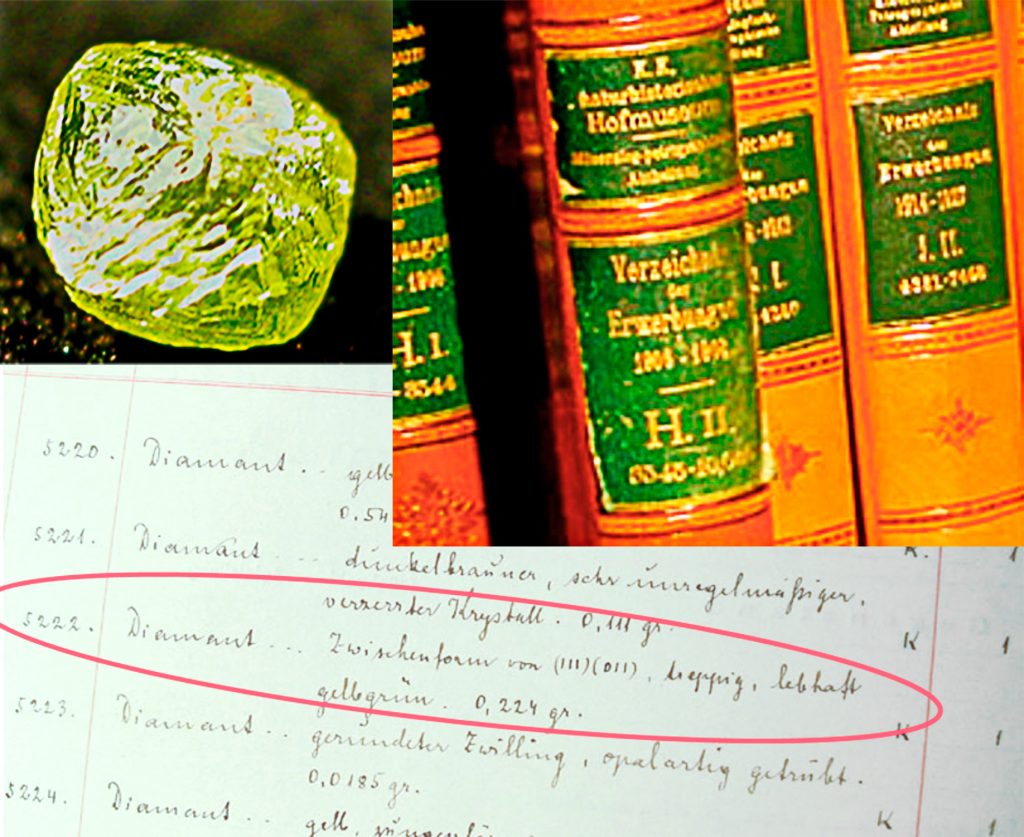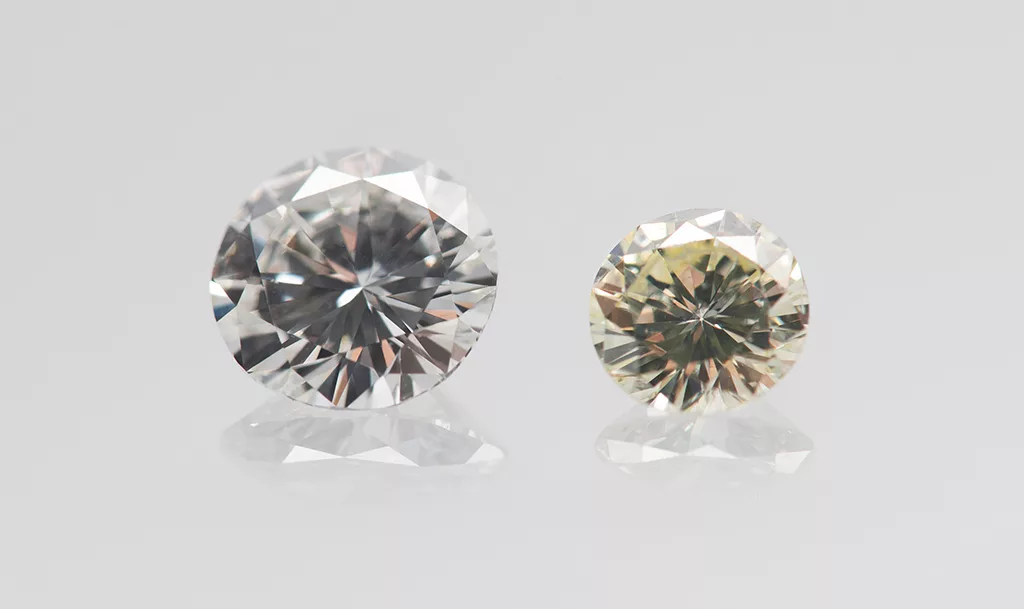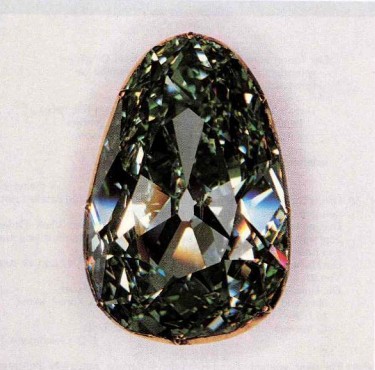
The Detection of HPHT-treatment of Diamonds at SSEF: 20 Years later
by J.-P. Chalain, first published in Facette 25 (February 2019)
HPHT treated diamonds first appeared on the market more than two decades ago. At this time, the treatment was not specifically disclosed nor could it be identified by gemmological institutes.
At this stage, SSEF thus immediately initiated a research project to develop a method to identify these newly treated diamonds which presented a challenge to the trade. Finally, in 2000, SSEF announced that it was able to identify the HPHT treatment of type II diamonds. About 20 years later, this article summarizes how we were able to achieve this breakthrough and which people from the trade and other research institutions were involved in this important step.
The term ‘High Pressure High Temperature’ (HPHT) refers to a diamond treatment that first appeared in industrial patents in the late 1970s (Schmetzer, 2010). It’s about twenty years later that the term HPHT was first mentioned at a gemmological conference (Van Bockstael, 1997). Probably by lack of available information at this time, the treatment was not described in detail. Specifically, the author described this treatment as being applied to fancy colour diamonds of type Ia and a possible Russian source was also mentioned.
Thus, in March 1999, when Rapaport quoted a press release from Lazare Kaplan (LKI) & General Electric (GE), announcing an “irreversible permanent process [that] can significantly enhance the colour and brilliance of select types of rough and polished diamonds”, the gemmological community was far away of thinking that this treatment was involving high pressure and temperature (HPHT). Intriguingly, the press release also mentioned that the “…treatment is undetectable and will remain undetectable…”.
Soon after, a meticulous survey of these said treated diamonds revealed that they were in fact exclusively colourless and of type IIa (Moses et al., 1999). This announcement was even more diverging from what we had learnt before from Mark Van Bockstael (1997).
In 1999, as part of our research project about this topic, SSEF ran a systematic study on the photoluminescence of colourless type IIa diamonds, inspired by the pioneering work of Dr. Joe C.C. Yuan (China) and the support of Prof. E. Fritsch (University of Nantes). Getting diamond samples for such a research project is always a real issue for gemmologists, and here we needed a selection of colourless diamonds and brown diamonds of natural colour together with colourless HPHT treated diamonds, all of them being of type IIa – this rare type of diamond represents only about 3% of natural diamonds.
One colourless treated diamond was offered to SSEF by Ronny Totah (Horovitz & Totah SA, Geneva) another one was loaned by Mr. R. Biehler (Ernst Färber, Münich) and, encouraged by first promising results of our study, more than ten gemmological laboratories loaned to SSEF their own samples to complete our study. Numerous additional colourless and brown type IIa diamonds of natural colour were kindly loaned to SSEF by Mr. D. Gol (Gidish SA, Geneva). Using the first prototype of the SSEF Spotter, the type of these diamonds was separated and selected by SSEF in one day out of an impressive series of diamonds.
In April 2000, SSEF announced in a Rapaport press release its ability to detect the HPHT-treatment of type II diamonds. One month later and arguing that SSEF was not the first laboratory claiming to do so, DTCResearch (De Beers group) sent to SSEF three series of type II treated and untreated colourless diamonds for a blind test. Fifteen days later SSEF sent its testing results and, according to DTC Research, SSEF was up to that day the first laboratory to pass this test! So, our ability to detect the HPHT-treatment of colourless type IIa diamonds was independently confirmed. We were thus proud to receive during the following Basel Show the congratulations of Mr. Nicky Oppenheimer (DeBeers) and Dr. James Shigley, director of research at GIA at that time.
Concerned by a possible secondary treatment applicable to HPHT treated diamonds of type II, DTC-Research continued its research in this matter which led two years later to two informative meetings (2003 and 2004), both held at the SSEF to present their new findings to the exclusive attention of the most exposed international gemmological laboratories, including the GIA, IGI, HRD, and GGL.
What about the HPHT-treatment of type I diamonds?
Similar to diamonds of type II, the HPHT-treatment removes the brown colour which may be present in diamonds of type I. But while type II diamonds are (quasi) nitrogen-free, type I diamonds contain nitrogen impurities, which are affected by the HPHT-treatment. The temperature involved in this treatment is high enough to break some of the commonly aggregated nitrogen atoms in the diamond structure, releasing them as single nitrogen atoms. As such, they subsequently induce a strong yellow hue – that of the famous ‘canary diamonds’ to the HPHT treated diamonds of type I. In addition, an optical centre also present in type Ia diamond may also be modified by the treatment to induce a (vibrant) green to greenish-yellow hue (Collins, 2000).
Interestingly, we were able to study shortly after a historical greenish-yellow diamond of natural colour, loaned to us by the Natural History Museum of Vienna (Chalain et al., 2004) that showed very similar spectral features, indicating the complexity of diamond colouration and treatment detection up to today.
This study started whilst visiting the collection of mineralogy of the Natural History Museum of Vienna, where we discovered a rough diamond in their collection with exactly the same greenish-yellow colour than that commonly described for HPHT-treated diamonds of type Ia.
The curator of the museum, Dr. Vera Hammer kindly loaned this rough greenish-yellow diamond of historic provenance to SSEF to further study its colour. Originally offered to the Vienna museum in 1907 by the Emperor Franz Joseph I, we were able to carry out advanced spectral analyses on this specimen. We found that most of the features we encountered in HPHT-treated type Ia diamonds studied by SSEF in 2001 (Figure 1) were also present in this historic greenish-yellow diamond of natural colour, except only one feature showing a distinct difference: the width (FWHM) of the platelets peak (B’) was much broader in HPHT treated diamonds than that of the investigated untreated diamond of historical provenance. Due to the lack of further samples of natural greenish-yellow colour at that time, we could not further confirm this separating key feature by additional measurements.
Only in 2009, still focusing our research on these greenish diamonds of natural colour, we were able to confirm the postulated criterion by adding data of ten more samples of natural colour. In a collaborative effort, we shared our findings with DTC-Research and together we were able to plot a graph (FWHM B’ vs. position of the platelets peak) using all data from samples separately studied by SSEF and DTC. The graph revealed that the width vs. the position of the platelets peak is a key feature for separating greenish-yellow to yellowish-green type Ia diamonds of natural colour from those (type Ia diamonds) which are treated by HPHT.
This sums up the contribution of SSEF in the detection of the HPHT treatment, which today is still detectable using the then established criteria. Clearly, these breakthroughs would not have been possible without the collaboration of the following institutions: the University of Nantes, DTC-Research (today De Beers Technology) and the Natural History Museum of Vienna.
But our short note would not be complete if we would not reveal what we interpret as the most probable motivation of Lazar Kaplan and GE for announcing in 1999 – as mentioned above – that its undisclosed treatment (which turned out to be the HPHT treatment of type II diamonds) would remain undetectable. They knew how to do it, but had a patent on the detection method, thereby attempting to shield their treatment from being detectable by others. This fact was brought to our attention by Dr. Karl Schmetzer , who documented that GE was granted in 2002 a United States Patent (Patent No. US 6,377,340,B1) describing “a method for detecting whether a natural diamond has been processed at High Pressure and High Temperature (HPHT)” using photoluminescence. In light of this, SSEF took all the necessary legal steps to be able to reject the possible application of this patent in case we would have faced a patent infringement action, based on the argument that this patent is against public interest in Switzerland.


studied this yellowish-green rough diamond (ref. H5222) loaned by the Natural History Museum of Vienna. This diamond (1.12 ct) is archived under the reference H 5222 and was offered to the Museum in 1907 by his Majesty, the Emperor Franz Joseph the First.
Want to learn more about diamonds?

Sign up for our free online course: Introduction to diamonds


